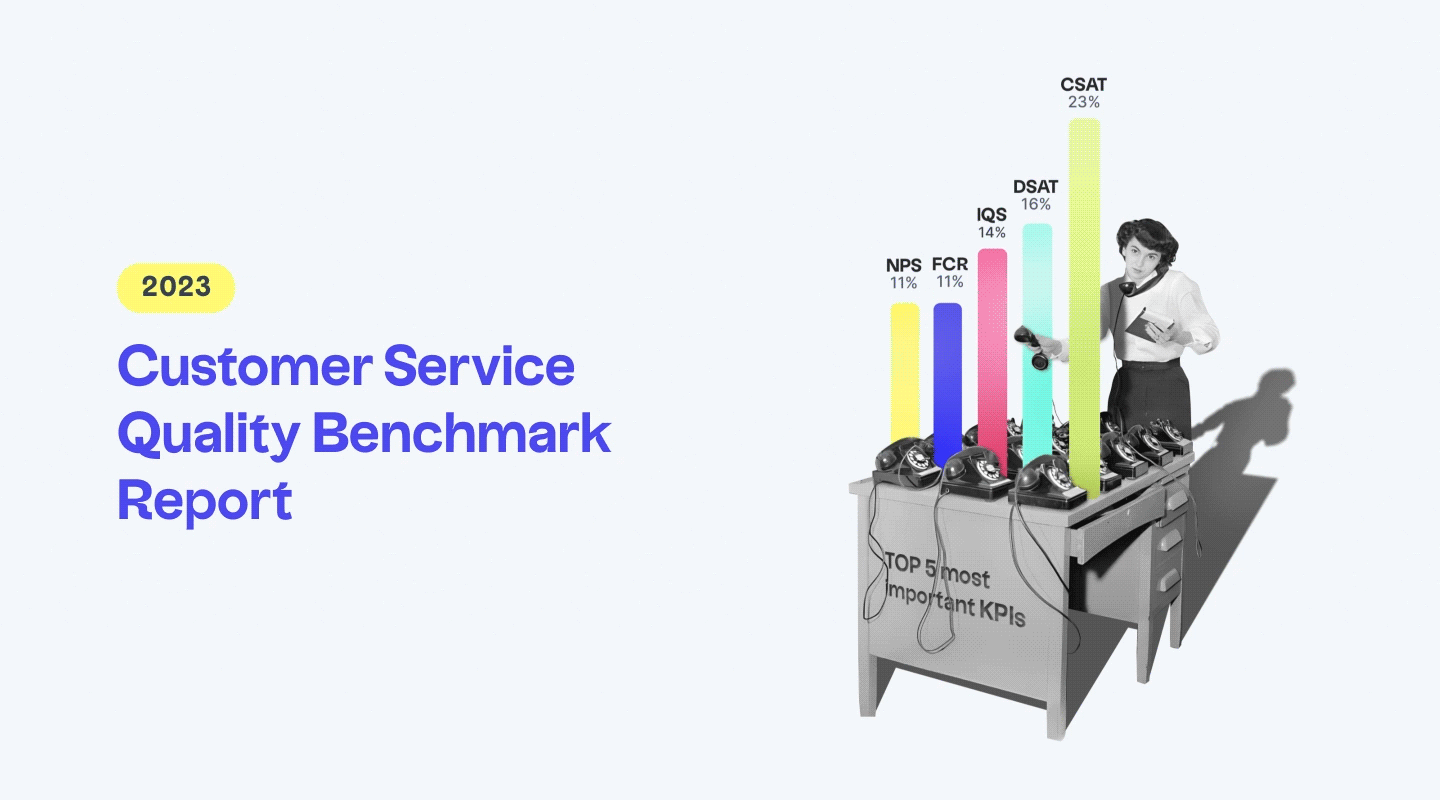Customer Satisfaction Score (CSAT) is one of the most popular metrics that most support teams track to know how they measure up against their customers’ expectations.
To collect CSAT survey responses and calculate your score, you can either send the surveys out manually or automate the process:
- Create a custom Customer Satisfaction survey that you send to your customers via email. It can be a simple online form with a single question and a rating scale of your choice. However, this takes time to design and implement and requires ongoing manual upkeep to track responses.
- Send ready-made CSAT surveys from your helpdesk system. Most customer support tools often come with built-in options for sending customer surveys. This way, you can merge CSAT surveys with other feedback forms and service metrics. However, there could be limitations in the in-built helpdesk CSAT features, like lack of customization and branding, or not enough insights into CSAT response rates.
- Use dedicated CSAT survey tools. Apart from advanced customer feedback forms, survey templates, and automation triggers, CSAT survey tools often provide AI-powered features for collecting and analyzing customer satisfaction data. You have to make sure such CSAT software integrates with your existing tech stack, though.
Unless you only have a couple of customers a day, you likely want to opt for the latter. But, with a number of CSAT survey tools out there, how do you know which one to choose for your team?

Choosing the right CSAT software
When selecting CSAT software for your customer service team, consider the following:
- Compatibility: Pick CSAT survey software that smoothly integrates with your current helpdesk and other tools your support team uses. This keeps your data centralized, reducing the need to switch between tabs or transfer data manually. Always review the CSAT software’s built-in integration options and avoid creating custom ones unless it’s essential.
- Key features: Keep an eye out for must-have features like customer satisfaction survey customization, automated workflows and triggers, and open-ended questions.
- Ease of use: Take advantage of free trials to evaluate the CSAT survey software’s user-friendliness. Consider how much onboarding and training might be needed.
- Security: Verify the CSAT software’s commitment to security, including its technical measures, staff training, and key certifications like SOC 2.
- Cost: Aim for a customer survey tool that fits within your budget while offering the features and integrations essential to you.
- Support: Browse platforms like G2 to get impartial feedback on the provider’s support efficiency and overall user satisfaction.
To make the selection process easier for you, we’ve picked out the best CSAT software solutions that you should consider:
- Nicereply
- Survicate
- Qualtrics
- SurveyMonkey
- GetFeedback
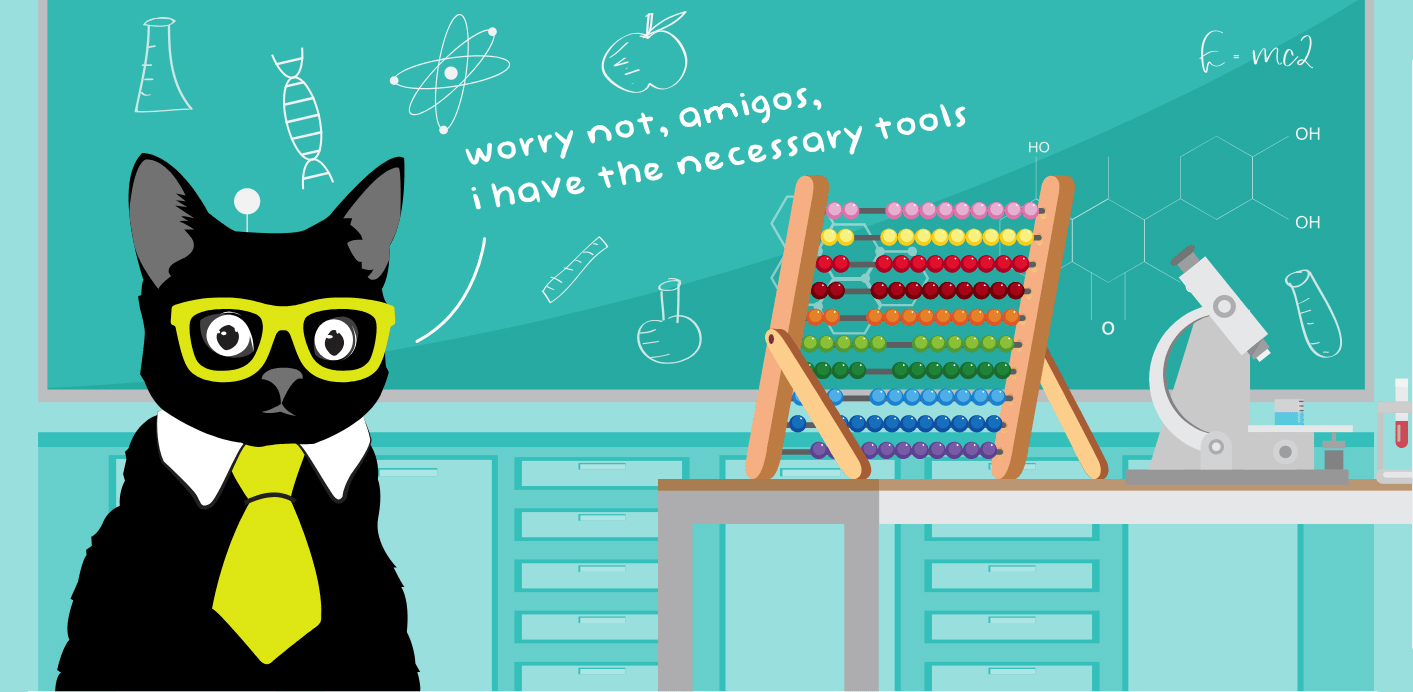
CSAT tool: Nicereply
Nicereply is a customer survey software that allows you to send customized surveys after every interaction or ticket resolution. It also offers opportunities to ask additional questions, use multiple rating scales, get actionable feedback, and report on your progress.
- CSAT, CES, and NPS surveys
- Branding & customization — boost the credibility of your surveys by making them instantly identifiable
- Optimized for deliverability — thanks to streamlined code, minimalistic design elements, and a mobile-responsive layout
- Personalized “Thank You” pages — redirect your customers to a thank you page of your design after survey completion and encourage them to share their positive experiences on social media or guide them towards other meaningful actions
- Automated triggers — customize send-out settings based on specific teams or agents. Decide the ideal timing post-resolution, whether it’s immediate, an hour later, or the following day
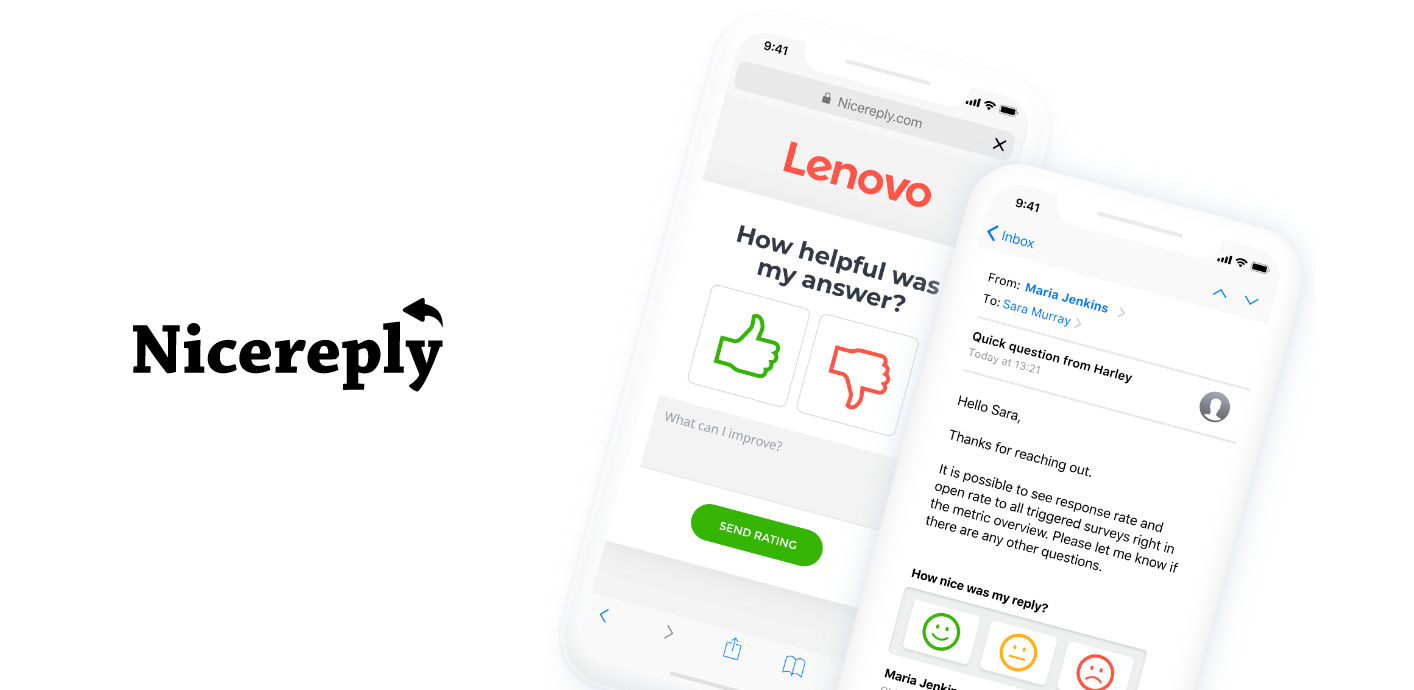
CSAT software solution: Survicate
Survicate is an effortless survey tool, ideal for gathering continuous feedback across various channels including email, web, in-product, and mobile apps. With the latest addition of AI features, you can create surveys and analyze the responses in seconds.
- Create CSAT surveys with a drag-and-drop editor (CES, NPS and many other ready-to-use templates are also available)
- Intuitive survey creator, no coding required
- Easy to set up, with a bunch of native integrations at your disposal
- Automatically collect feedback with recurring surveys for a constant stream of valuable insights

CSAT platform: Qualtrics
Qualtrics offers customer feedback software as a part of its Experience Management Platform. With post-transaction evaluations, periodic satisfaction surveys, and continuous satisfaction tracking, Qualtrics offers plenty of features for measuring CSAT.
- Feedback capabilities for SMS, voice, social, web, app, and other channels
- Pre-built surveys for every channel and program type
- Advanced stats, text, key driver, and predictive analytics at your fingertips
- Shareable reports and dashboards
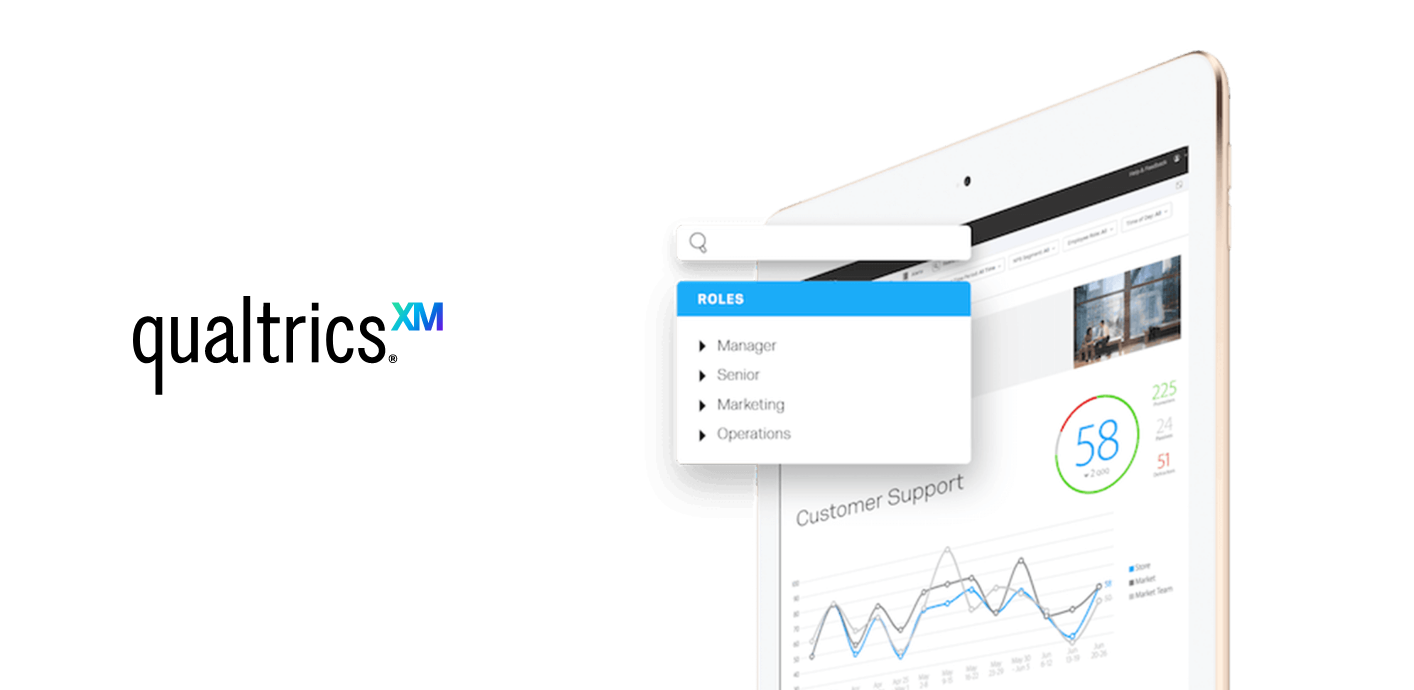
CSAT software: SurveyMonkey
SurveyMonkey offers a variety of customer feedback forms and customizable CSAT surveys. It’s a great choice for teams with more complex needs and expectations, who want to ask for customer feedback at different parts of the customer journey.
- Start from a blank canvas or use one of the survey templates (Customer Satisfaction, Net Promoter Score, Website Feedback, and more)
- Create personalized, on-brand online surveys — pick fonts, colors, logos, custom URLs, and styles
- Edit and review surveys together with your team
- Collect survey responses via email, website, SMS, social media, QR codes, or offline
- Automatic results summaries, custom dashboards, and advanced filters

CSAT tool: GetFeedback
GetFeedback is a CX platform that helps you measure customer experience and identify key drivers behind customer satisfaction. It’s also one of the most popular feedback integrations for Salesforce.
- Collect customer feedback across all channels, including email, SMS, website, and mobile apps
- Automate feedback collection at key touchpoints and set up triggers to act upon customer feedback immediately
- Personalize surveys with customer data for a tailored experience that increases response rates
- View your metrics in one place — including CES, CSAT, NPS, or Goal Completion Rate (GCR) — by aggregating scores across channels
- Analyze customer sentiment and spot relevant trends, then easily share those insights with your team
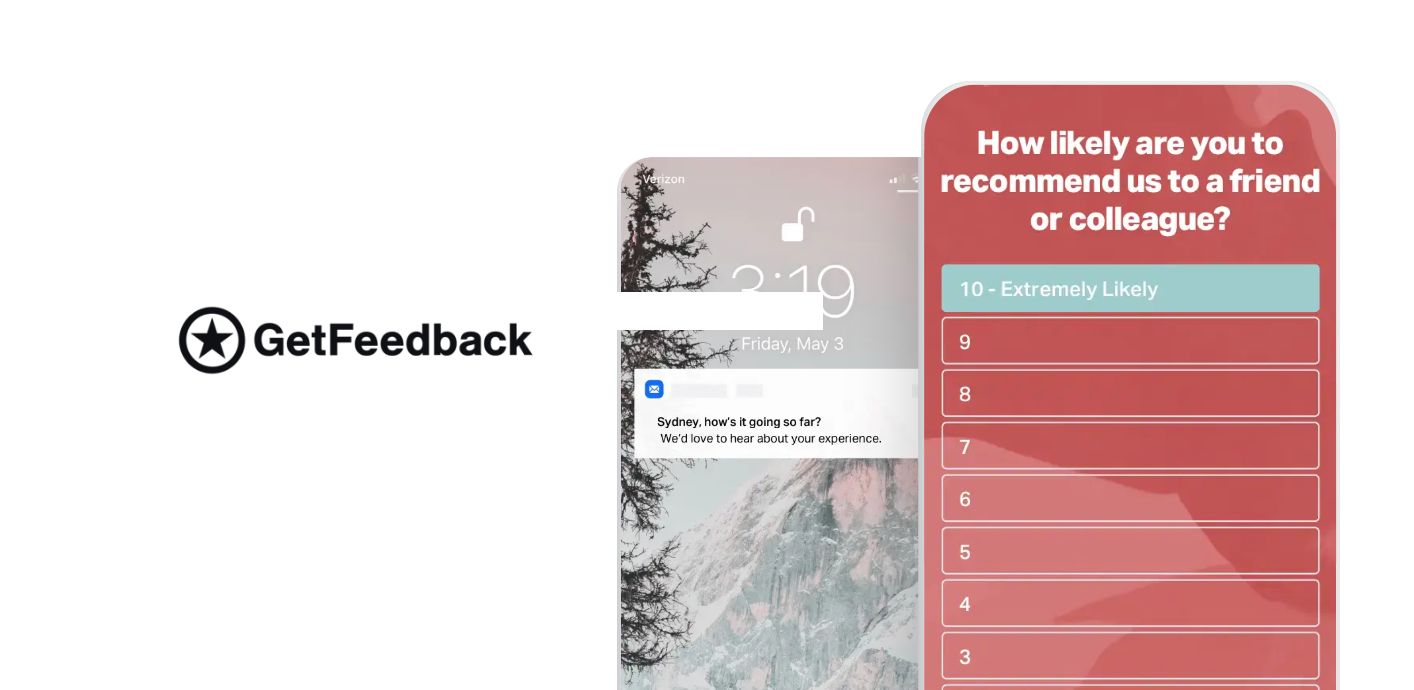
CSAT surveys — best practices
Once you have the right customer satisfaction survey tool, you’re well on your way to higher CSAT. How high is enough, though?
It’s normal that when you don’t see your CSAT scores as high as you’d like, you immediately start looking for areas in your support system to address. But…
- Is your CSAT actually that low to start with?
- Where should you be looking?
- What exactly should you be looking for?
- How do you go about addressing these issues in a way that actually improves your CSAT scores?

Compare your CSAT score to industry benchmarks
According to the latest Customer Service Quality Benchmark Report, the CSAT benchmark for 2023 is 85%. If you’d like to see how you compare against your industry standards, check out these CSAT benchmarks measured by ACSI:
- Online retailers — 80%
- Full-service restaurants — 80%
- Personal computers — 79%
- Household appliances — 79%
- Life insurance — 78%
- Banks — 78%
- Software — 78%
- Automobiles — 77%
- Shipping companies — 77%
- Fast food restaurants — 76%
- Online travel agencies — 76%
- Airlines — 76%
- Hotels — 75%
- Search engines and information — 75%
- Video streaming services — 74%
- Health insurance — 73%
- Social media — 71%
More and more companies admit that they compete mostly based on the customer experience that they offer, so keeping an eye on your CSAT and the industry benchmarks is a great way to analyze how your products and services compare.
⭐️ For more insights on customer satisfaction metrics and benchmarks, download the Customer Service Quality Benchmark Report for free.
Send CSAT surveys at the right moment
Be mindful of when you’re sending CSAT surveys. Typically, survey responses are collected:
- After a purchase
- Following product changes or new feature launches
- Just before renewing a subscription
- After a customer support interaction
By measuring customer sentiment at various stages, you get a clearer picture of the overall customer experience. Dive into the details of your customer’s journey, evaluate your support objectives, and pinpoint those critical moments when feedback would be most valuable.
💡 Remember, the timing of your surveys matters a lot. It can affect both the number of responses and how accurate they are. For example, the longer you wait to send a customer satisfaction survey after a support interaction, the less likely you are to receive any response. Speaking of…
![]()
Pay attention to CSAT survey response rates
When collecting Customer Satisfaction surveys, the most valuable feedback often comes from open-ended comments. The problem is:
- The average CSAT survey response rate is 19% for chat, 5% for email, and 5% for phone.
- Only 19% of all CSAT ratings have a comment beside the score. If you’re using chat, you only receive written feedback from 3% of your customers. On email or phone, it’s less than 1%.
Apart from asking for feedback at the right moment (and doing so regularly), you can also get higher response rates for your customer surveys if you:
Detailed feedback is always best – when customers add comments, it gives you far more context for their opinions.

Add more metrics into the mix
Is CSAT a good KPI? Yes. But should it be the only metric to look at? Not necessarily.
Another issue is that external quality metrics like CSAT, CES, or NPS only tell you half of the story. They reflect how satisfied your customers are with what you do.
However, they say nothing about, for example, how well your agents followed the internal guidelines, or even if they provided a correct and full solution to the customer’s inquiry.
Sometimes, customers might not get the bigger picture. They might be upset over something that’s not really in your team’s hands. In other words: if a customer gives a bad rating because they wanted a feature that wasn’t planned, it doesn’t mean your service was poor.
Top-performing customer service teams go beyond merely tracking CSAT; they scrutinize the feedback and take actionable steps based on it. To really understand how you’re doing, you should review customer support interactions and measure your Internal Quality Score (IQS).
Through conversation reviews (whether by peers, specialized QA experts, or managers), you can systematically evaluate support interactions against your internal quality benchmarks. It becomes clearer whether the support team influences low Customer Satisfaction scores or if external factors, such as product quality or company reputation, play a role.
For instance, if you have a high Internal Quality Score but a low Customer Satisfaction Score, it suggests that areas outside of customer support might need attention and improvement.
Originally published in March 2020; last updated in September 2023.

